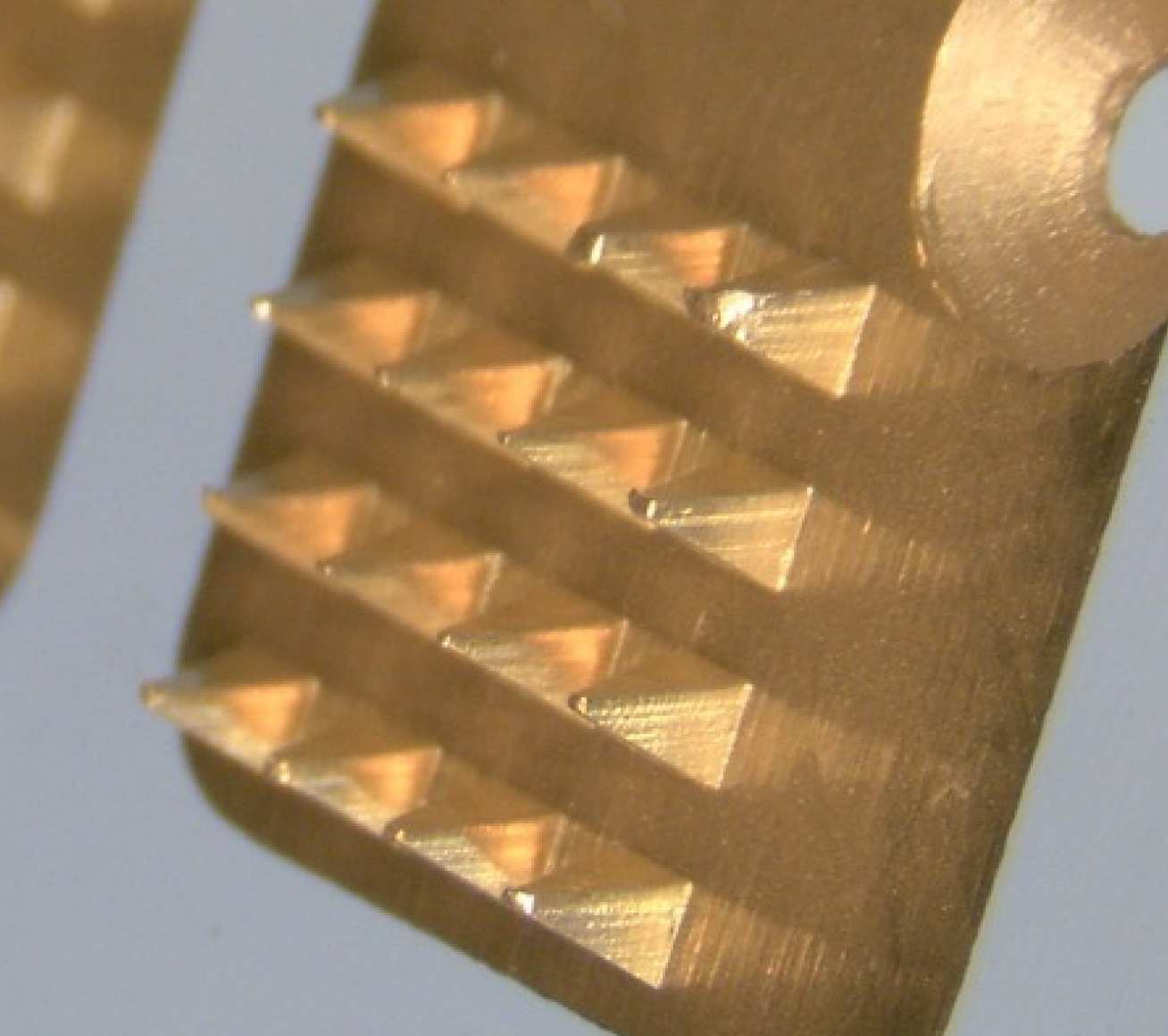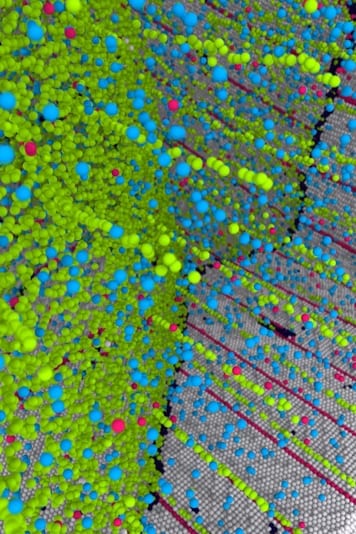
Scientists have successfully used microneedle biosensors to accurately detect changes in antibiotic levels in the body, for the first time.
Small, non-invasive patches worn on the skin can accurately detect the levels of medication in a patient’s system, matching the accuracy of current clinical methods.
In a small-scale clinical evaluation, researchers at Imperial College London have shown for the first time how microneedle biosensors can be used to monitor the changing concentration of antibiotics.
Their findings, published in The Lancet Digital Health, show the sensors enable real-time monitoring of changes in antibiotic concentration in the body, with similar results to those obtained from blood tests.
Our biosensors … could tell us how much of a drug is being used by the body and provide us with vital medical information, in real time – Dr Timothy Rawson Department of Infectious Disease
The team believes the technology could change how patients with serious infections are treated by showing how quickly their bodies ‘use up’ medications they are given.
The researchers add that if future development and testing proves successful and the technology reaches the clinic, it could help to cut costs for the NHS, reduce drug-resistant infections and improve treatment for patients with life-threatening infections and improve the management of less serious ones.
They add that biosensors could reduce the need for blood sampling and analysis as well as offer more efficient, personalised drug delivery that could potentially be delivered outside of the hospital setting for outpatients.
Real-time monitoring
Dr Timothy Rawson, from Imperial’s Department of Infectious Disease and who led the research, said: “Microneedle biosensors hold a great potential for monitoring and treating the sickest of patients. When patients in hospital are treated for severe bacterial infections the only way we have of seeing whether antibiotics we give them are working is to wait and see how they respond, and to take frequent blood samples to analyse levels of the drugs in their system – but this can take time.
“Our biosensors could help to change that. By using a simple patch on the skin of the arm, or potentially at the site of infection, it could tell us how much of a drug is being used by the body and provide us with vital medical information, in real time.”
Microneedle biosensors use a series of microscopic ‘teeth’ to penetrate the skin and detect changes in the fluid between cells.
These teeth act as electrodes to detect changes in pH and can be coated with enzymes which react with a drug of choice, altering the local pH of the surrounding tissue if the drug is present.
The technology has been used for continuous monitoring of blood sugar, but the Imperial group has, for the first time, shown its potential for use in monitoring changes to drug concentrations.
In a small proof-of-concept trial, the Imperial team trialled the sensors in 10 healthy patients who were given doses of penicillin. Sensor patches (1.5 cm sq) were placed on their forearms and connected to monitors, with measurements taken frequently – from 30 minutes before receiving oral penicillin, to four hours afterwards. Blood samples were taken at the same time points for comparison.
Data collected from nine patients revealed that the sensors could accurately detect the changing concentration of penicillin in patients’ bodies. The researchers found that while penicillin concentrations varied widely from patient to patient, the overall readings from the biosensors were similar to those from blood samples – showing a marked decrease in drug concentration over time.
According to the team, the early findings are positive, but they explain the study is limited by the very small sample size and the was only tested on a single antibiotic, in healthy patients.
Optimising antibiotic dosage
The researchers explain that along with further testing in larger patient groups to strengthen the initial findings, they will look to see how the sensors could help to optimise the dosing of penicillin and similar antibiotics. They add that the sensors could form the basis of a ‘closed loop system’, like an insulin pump – where antibiotics are administered to patients and levels continuously monitored to ensure they receive a sufficient dose.
Professor Tony Cass, from the Department of Chemistry said: “This small, early-stage trial has shown that the sensor technology is as effective as gold standard clinical analysis in detecting changes to the concentrations of penicillin in the human body. When further developed, this technology could prove critical for the monitoring and treatment of patients with severe infections. More widely it could be used to monitor many other drugs and personalise treatment in many diseases”
This technology could prove critical for the monitoring and treatment of patients with severe infections.Professor Tony CassDepartment of Chemistry
The technology was developed through research supported by funding from the National Institute for Health Research (NIHR) and Fondation Merieux. Volunteers were recruited and treated at the NIHR Imperial Clinical Research Facility at Imperial College Healthcare NHS Trust. This collaborative work will be advanced further through Imperial’s National Centre for Antimicrobial Research and Optimisation (CAMO)
Professor Alison Holmes, from Imperial’s Department of Infectious Disease and director of the NIHR Health Protection Research Unit in HCAI and AMR at Imperial and the CAMO, said: “This technology is an example of the close collaboration between scientists, medics and engineers going on in institutions across the UK, which could change the way we treat patients. Antibiotic resistance and drug-resistant infections are among the biggest threats to human health in the world today.”
Professor Holmes added: “Technological solutions such as our microneedle biosensor could prove crucial in improving how we use and protect the arsenal of life-saving antibiotics we have available to treat patients. Ultimately, these types of collaborative, multidisciplinary solutions could lead to earlier detection and better treatment of infections, helping to save more lives and protect these invaluable medicines for generations to come.”
Learn more: Microneedle biosensors accurately detect patient antibiotic levels in real-time
The Latest on: Microneedle biosensors
[google_news title=”” keyword=”microneedle biosensors” num_posts=”10″ blurb_length=”0″ show_thumb=”left”]
via Google News
The Latest on: Microneedle biosensors
- SD Biosensor Inc 137310on April 25, 2024 at 5:00 pm
We sell different types of products and services to both investment professionals and individual investors. These products and services are usually sold through license agreements or subscriptions ...
- Biosensors Market Growth Foreseen To Achieve USD 63.07 Billion Value By 2032, With An Estimated 9% CAGRon April 18, 2024 at 5:00 pm
According to Market.us, the global biosensors market is projected to expand significantly, reaching an estimated value of approximately USD 63 billion by 2032, up from USD 27.2 billion in 2022. This ...
- How microneedling works to boost collagen production for skinon April 17, 2024 at 12:29 am
What are the home microneedling devices that can be used? • Microneedle rollers: These are small devices you hold and roll across your skin. They have many tiny needles on a roller.
- 10 Best Microneedle Rollerson April 7, 2024 at 5:00 pm
Different accessories of the roller microneedle can bringdifferent effects, and can be used on the scalp, face, and various parts of the body, includinosensitive skin around the eyes, local area ...
- Microneedle prep (IMAGE)on March 18, 2024 at 6:49 pm
Disclaimer: AAAS and EurekAlert! are not responsible for the accuracy of news releases posted to EurekAlert! by contributing institutions or for the use of any information through the EurekAlert ...
- Graphene-enhanced biosensor inks: Revolutionizing healthcare technologyon March 13, 2024 at 2:17 am
Chronic diseases like diabetes have significantly increased in prevalence worldwide. The need for biosensors has grown along with the need for home healthcare equipment. Traditionally, carbon and ...
- Tetrahedral Nanostructure-Based Wearable Microneedles for Long-Term Nucleic Acids Trackingon March 8, 2024 at 9:16 am
In an article recently published in the journal Nature Communications, researchers proposed a tetrahedral nanostructure-based natronobacterium gregoryi argonaute (NgAgo) on wearable microneedles ...
- microneedle patchon March 6, 2024 at 4:00 pm
This is the promise of microneedle patches (MNP), which are essentially what they sound like. These would also have uses in diagnostics that might one day obliviate the need for drawing blood.
- A Microneedle Vaccine Patch Printer For Thermostable MRNA Vaccineson April 30, 2023 at 6:12 am
This is the promise of microneedle patches (MNP), which are essentially what they sound like. These would also have uses in diagnostics that might one day obliviate the need for drawing blood.
- Transdermal and Microneedle Drug Delivery 2023on October 11, 2022 at 5:00 pm
The 2023 Transdermal and Microneedle Drug Delivery Conference will explore real world applications of microneedles in drug delivery and strategies for advanced and user-centric device design.
via Bing News










